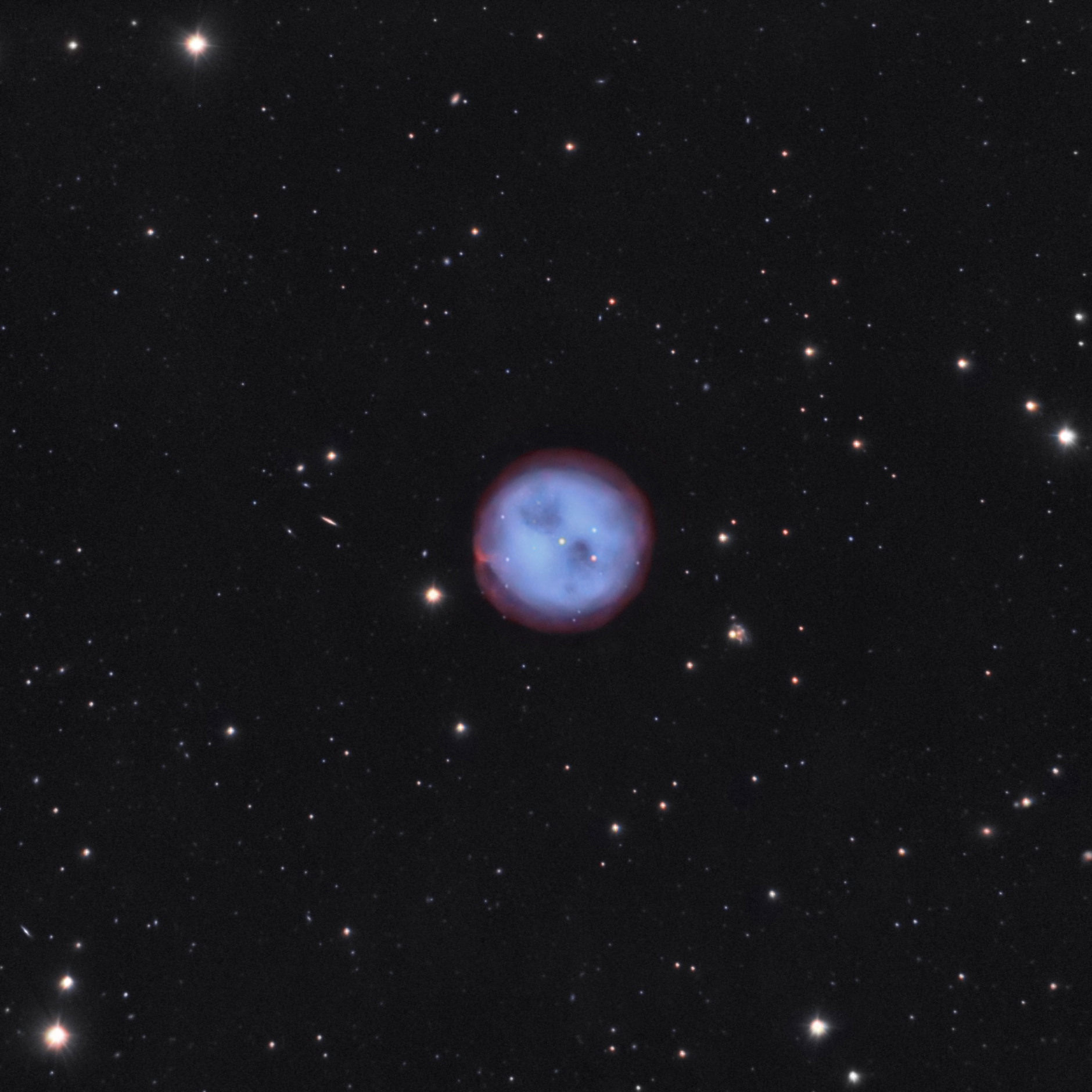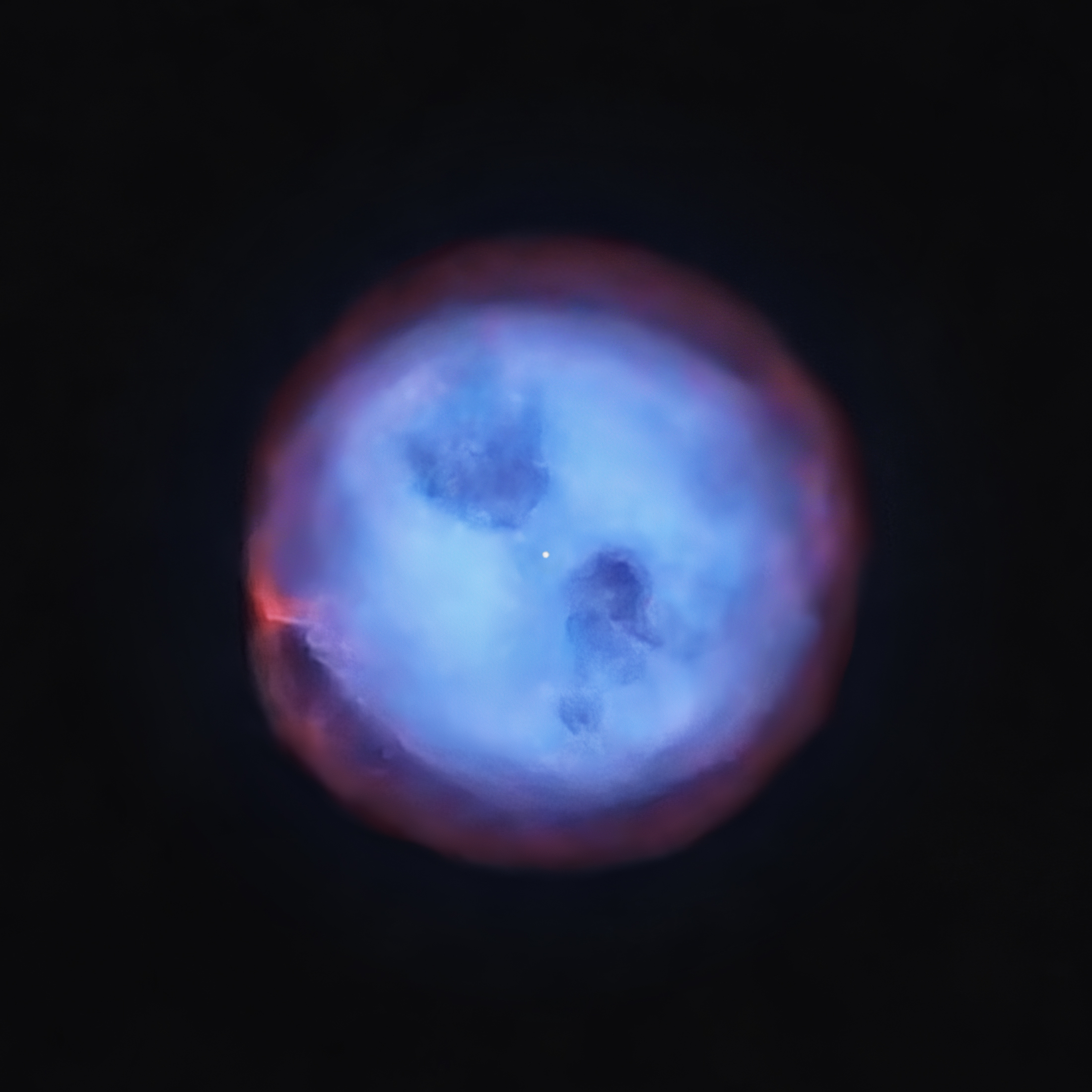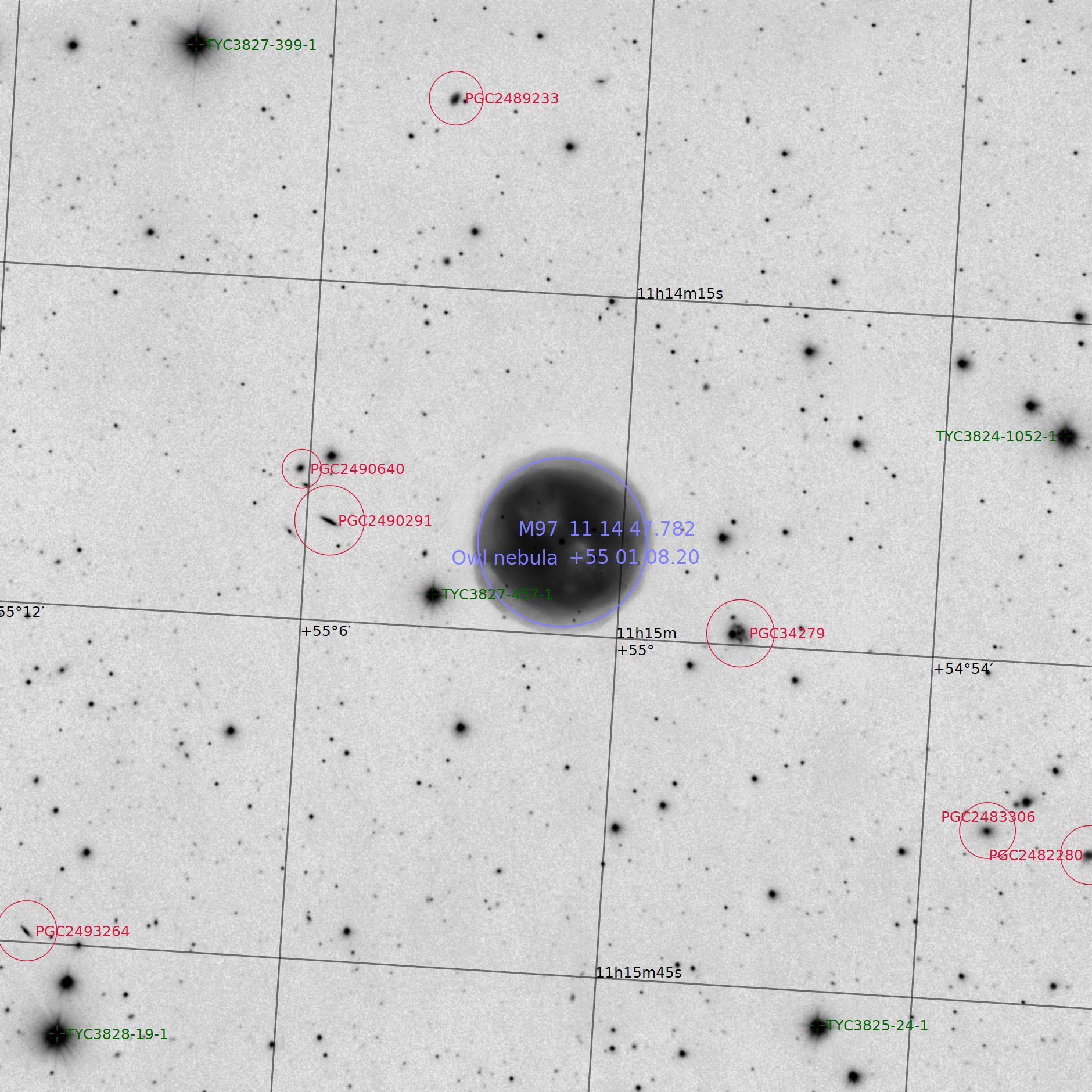
M97 - Owl Nebula
This planetary nebula resembling an owl (well, kind of) is located in the constellation Ursa Major or The Big Dipper approx. 2000 light years away. It is definitely one of the harder Messier objects to capture.
The 14th magnitude central star has since reached the turning point of its evolution where it condenses to form a white dwarf about 8000 years ago (this phenomenon is called a Nova) and created this beautiful planetary nebula. The reminescent white dwarf has 55–60% of the Sun's mass, 41–148 times the brightness of the Sun, and an effective temperature of 123,000 K. The star has been successfully resolved by the Spitzer Space Telescope as a point source that does not show the infrared excess characteristic of a circumstellar disk.
The nebula holds about 0.13 solar masses of matter, including ionized hydrogen, helium, nitrogen, oxygen, and sulfur; all with a density of less than 100 particles per cubic centimeter, that are driven by massive stellar winds of the Nova at high velocities (~30 km/s) into the surrounding interstellar medium.
-
Category
planetary nebula
-
Coordinates
RA 11h 14m 47.7s
DEC +55° 01′ 08.50″ -
Distance
~ 2000 ly
-
Apparent magnitude
9.9 mag
-
Equipment
28“ f/8 RC
Custom Mount
SBIG STX-16803
-
Exposure
L: 24 x 300 s
R: 6 x 300 s
G: synthetic
B: 6 x 300 s
Total Integration: 3.0 h -
Publication Date
06.12.2019


